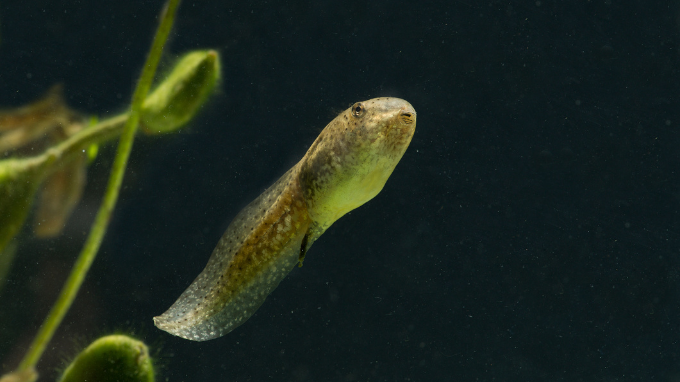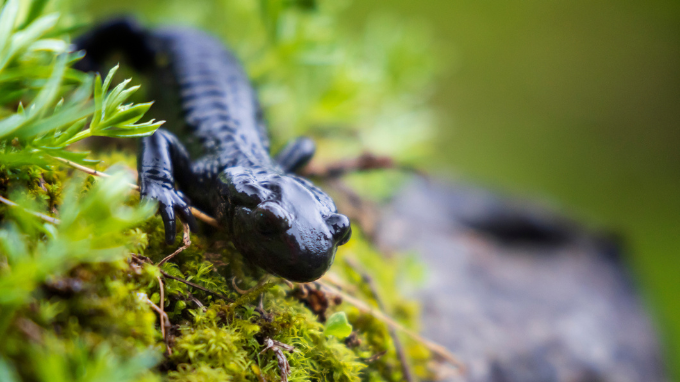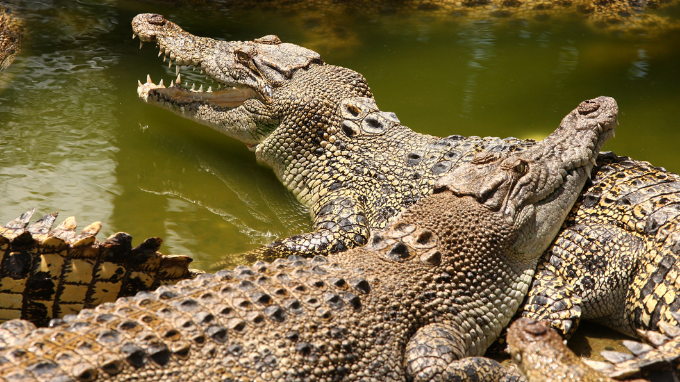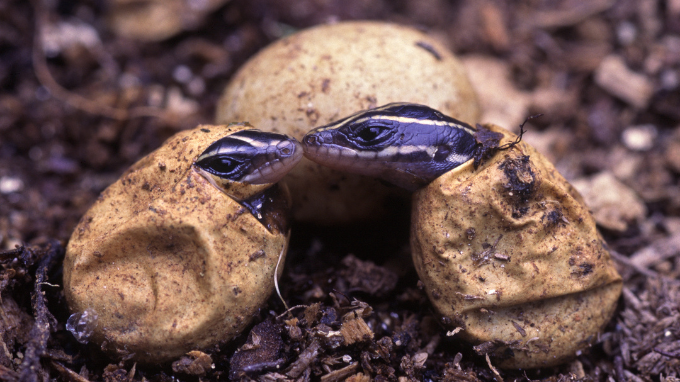
Amphibians and reptiles might seem similar at first glance – they’re not exactly warm and fuzzy, after all. But there are many, many things that make them different from each other. Confused about which category frogs fall into, or which of the two likes a dip in the water? We’re here to help clear things up for you.
We’ll explore their differences and delve into some frequently asked questions you might be wondering about the two below.
The similarities between amphibians and reptiles
Before we get onto the differences, let’s take a look at how amphibians and reptiles are alike.
The main similarities are that they’re both cold-blooded, and they’re both vertebrates, which means they have backbones. They can both also both be found on every continent – except for Antarctica, it’s a bit too cold for them there!
What are amphibians?
Amphibians are four-limbed vertebrates which belong to the class (a biological classification) Amphibia. They live in a variety of different habitats, including land, trees, water and even underground – though they never stray too far from water so that can stay moist.
What are some characteristics of amphibians?
Let’s start with the things we can see: their appearance. Amphibians’ skin tends to be moist, which stops them from drying up. A lot of amphibians have smooth skin, though many toads are covered with raised glands, which make them bumpy, and are used to produce toxic secretions – this protects them from any sneaky predators looking for food.

Their home
When they first hatch as aquatic larvae, they use their gills to breathe underwater. As they get older, they undergo a metamorphosis, developing four legs and lungs, and beginning to spend more time on land. Take frogs, for example. They begin life as tadpoles, before developing legs so they can walk around on land.
Their skin
They can also breathe through their moist skin, which is described as porous – a word that means having tiny holes that let liquid (or in this case, air) pass through. This makes them very sensitive to toxins in their environment. So, if you see amphibians happily swimming around in water, then it’s an indication that it’s a suitable home for them – if you don’t, then the water is more than likely going to be harmful to them.
Their tongues and eyes
The tongues of amphibians are different from reptiles’ too. Most amphibians grow an entire tongue, and it’ll usually be very sticky so they can easily grab hold of nearby prey.
Their eyes work differently as well. Since they live on land and in the water, their eyes have evolved to work just as well in dry and wet environments, although they can only see certain colours. They can at least identify certain shades in low light, but for the most part they generally only see in black, white and grey.
Their eggs
Amphibians’ eggs are jelly-like and full of gooey mucus, with a membrane on their outer layer allowing water and gas to pass through them. Once these eggs have been fertilised, they’re usually laid in water.

Lists of amphibians
Some of the most common examples of amphibians include:
- Frogs
- Toads
- Salamanders
- Newts
- Axolotls
Fun amphibian facts
- The word amphibian comes from the Greek term amphibios which means “living a double life”
- There have been more than 8,100 types of amphibians discovered across the world
- Amphibians first appeared around 340 million years ago
- Usually, it’s the brightest amphibians which are the most poisonous
- At 6 foot and 63kg, the largest amphibian is the Chinese Giant Salamander, while the largest frog is the 15-inch Goliath Frog!
- A group of frogs is called an army
What amphibians can you find at Deep Sea World?
You can discover all sorts of amazing amphibians at Deep Sea World. Weave your way around the plant life of the Temple of Frogs and you’ll come across plenty of different creatures, including the cute Golden Mantella, the Borneo Eared Treed Frog, White’s Tree Frog and the well-hidden Green and Black Poison Dart Frog. You’ll even be able to spot the Barred Tiger Salamander and some Axolotls too!
What are reptiles?
Reptiles are animals which belong to the class Reptilia that have four limbs, or in the case of snakes, are descended from four-limbed ancestors.

What are some characteristics of reptiles?
Their home
While some reptiles will spend time in water here and there, they do not have an aquatic stage of their life cycle, preferring instead to live most of their lives on land. Even the crocodile, who spends most of its day in the water, will still nest and rest on land.
Their skin
While an amphibian’s skin leaves them open to harmful pollutants and other toxins found in water, on land and even in the air, reptiles have no such problems. Their hard, watertight scales keep them well-protected. And while reptiles can’t secrete mucus through their skin, many of them have the ability to deliver toxins through their fangs when attacking.
Their tongues and eyes
Although some reptiles have sticky tongues in the same way amphibians do, many of them have a split tongue which they can use to smell and detect prey – these are most common in lizards and snakes. However, chameleons are one example of a reptile with a sticky tongue. The mucus on their tongue is said to be around 400 times thicker than human saliva, which gives their prey very little chance of escape!
Compared to amphibians, reptile eyes are a lot more well-developed. This is down to the fact that they’ve adapted to live on land, so their eyes can view a much broader range of colours – although they aren’t quite as effective in water. Also, reptiles who are nocturnal evolve vertical pupils while those diurnal reptiles – those who go about during the day – develop round pupils.

Their eggs
Reptilian eggs lay what are known as amniotic eggs. These eggs have a brittle or leathery shell and are closer to a chicken’s egg in appearance. When they hatch, the hatchlings look like miniature versions of their parents, too! The hatchlings of amphibians don’t tend to resemble what they’ll grow into – again, think of what a tadpole looks like at birth, and then think of the frog they’ll become in the future. They don’t look at all similar, do they?
Lists of reptiles
Some common examples of reptiles include:
- Snakes
- Lizards (including geckos and chameleons)
- Crocodiles and alligators
Fun reptile facts
- A snake’s scales are made of keratin – the same thing our hair and fingernails are made of
- Some species of gecko can detach their tails as a defence mechanism. When a predator grabs the tail, the gecko drops it so it can run away!
- Reptiles don’t have sweat glands of any kind
- Reptiles shed their skin in different ways. Snakes shed from head to tail in one entire section while lizards shed their skin in small, patchy sections.

What reptiles can you find at Deep Sea World?
Didn’t think you’d encounter royalty when you came to visit us? Well, you can! At Deep Sea World, you’ll have your chance to see our Royal Python, Max, in all his glory. If you attend one of our creatures encounters there is a chance of meeting one of our Corn Snakes too! Sam, Shreddie, Alex and Euan love saying hi to you all.
Are frogs reptiles or amphibians?
Because of their aquatic stage at birth, the fact they undergo a process of metamorphosis, and their slimy skin, frogs are amphibians!
Are snakes amphibians or reptiles?
Although some snakes are more than capable of swimming in water, their scaly skin, split tongues and hard-shelled eggs mean they are reptiles!
We hope you’ve found this lesson informative! Now you know the difference between amphibians and reptiles, why not see them for yourself at our incredible exhibits? Take a look at our homepage for more info on how to grab tickets to a Deep Sea World exhibit.
